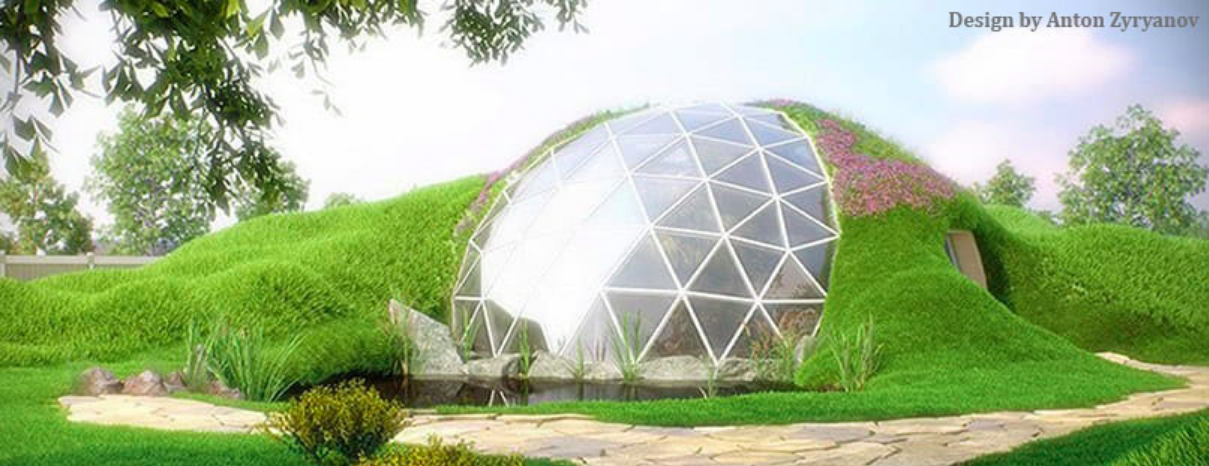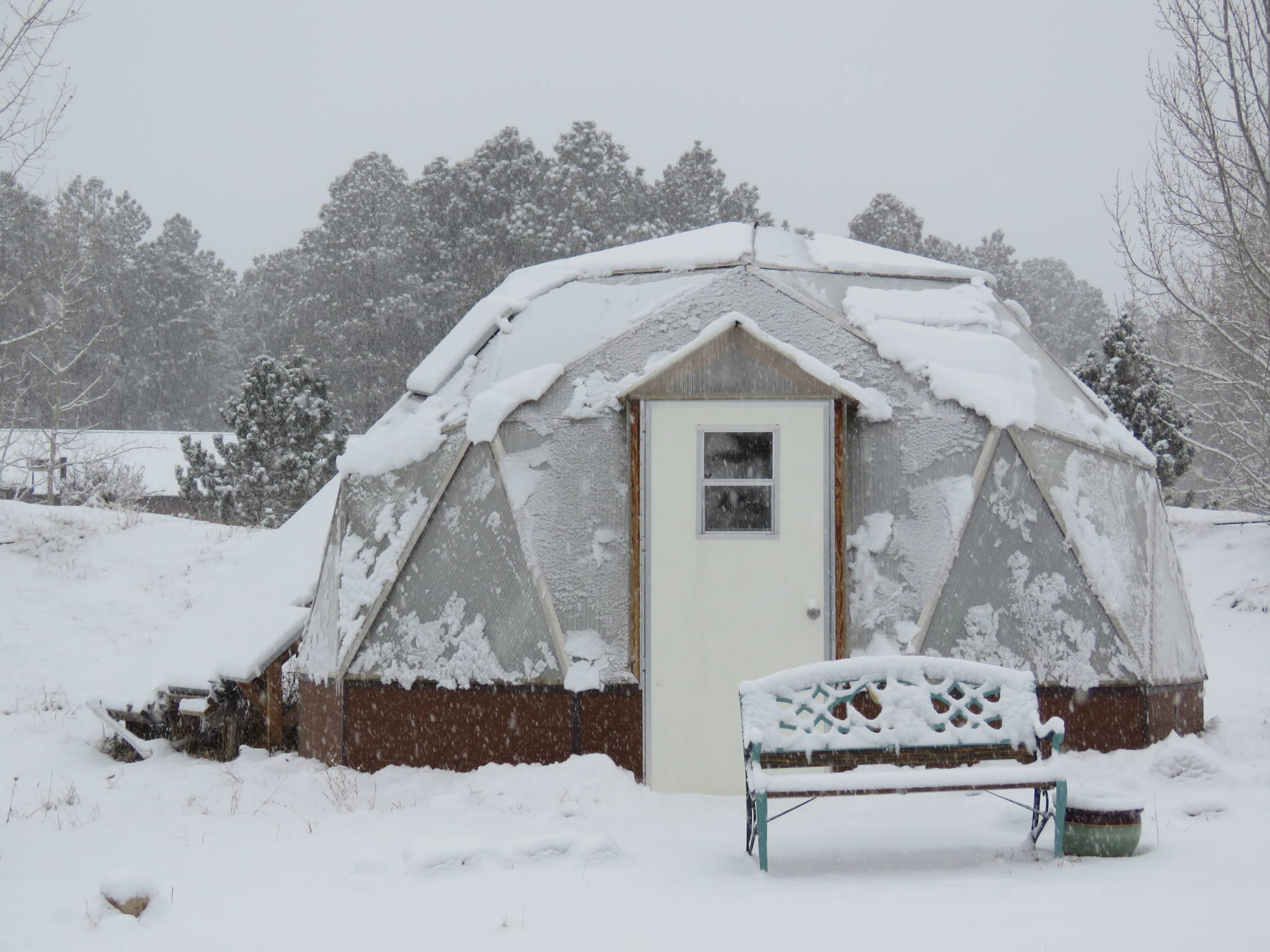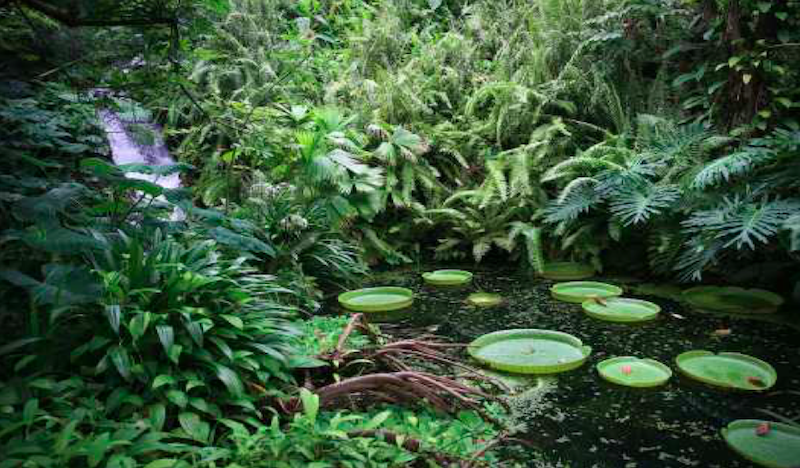The Art of Greenhouse Growing, Living And Home Design: Building The Ultimate Greenhouse
Today, we celebrate nature’s greenhouse and all its forms for creating and sustaining life on the planet. Spending more time at home has given some of us the much-needed motivation for jumpstarting projects we thought were impossible or have been putting off for years.
Our mission was to transform a rare green backyard oasis in the middle of New York City, fully equipped with gardening shed and a push mower into a mini urban biosphere for growing all types of things. It was clear this project was going to require a bit more research and a lot more convincing.
So in honor of Earth day – and every day – it was time to level up with the planet through learning new ways to make green spaces thrive.
Here are 10 reasons to consider learning the art of greenhouse building and design – including the benefits of moving inside one for a more eco-friendly home and healthier lifestyle.
A greenhouse provides the ultimate environment for growing just about everything. From herbs to flowers to vegetables and on a planetary scale, life itself. The greenhouse environment provides the heat and water vapors to grow green things in abundance.
By no means is this the definitive list, we encourage you to do your own research on the best practices for bringing greenhouse projects to life.
10) A great stress reliever.
For many, outdoor spaces are a tranquil retreat. Taking time out to enjoy natural settings provides a relief from mental fatigue, slowing down the heart rate, reducing blood pressure and overall making us feel less stressed.
9) It’s worth the investment, even if you need to start small.
Do you want to make a big investment or a small contribution to this foray into greenhouse design? Do you want to do it all yourself and buy a greenhouse kit with all the building materials? Or, have someone else design and build the greenhouse of your choosing?
If you want the added benefit of growing under glass but don’t have the space for a full-sized greenhouse, tiny greenhouses offer possibilities for a much smaller footprint.

But on a larger scale greenhouses can help transform a blighted urban community. A group in Detroit is converting abandoned houses into greenhouses which they hope will serve as a prototype for more city revitalization projects in Detroit and beyond.

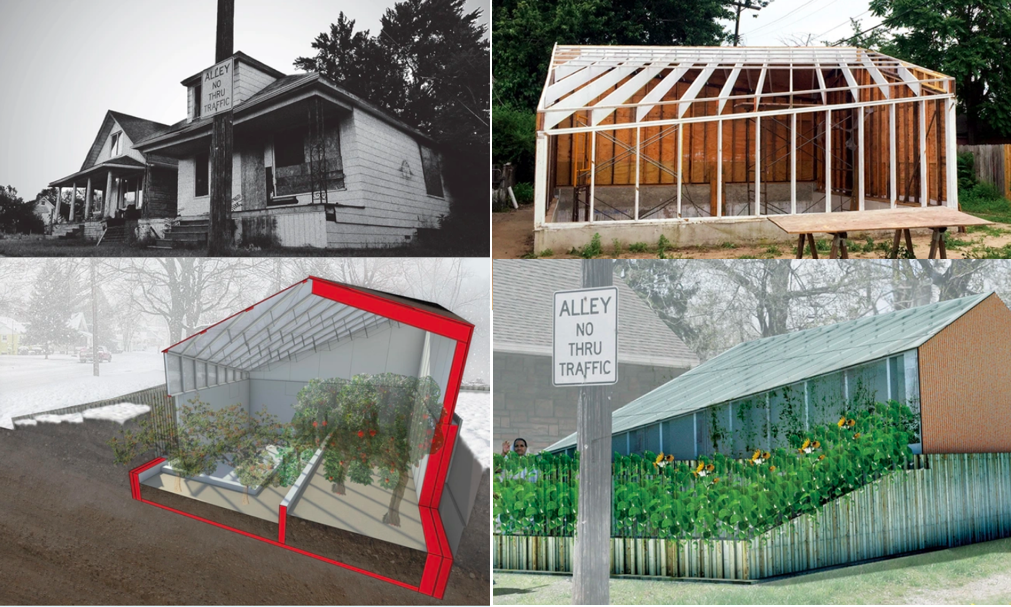
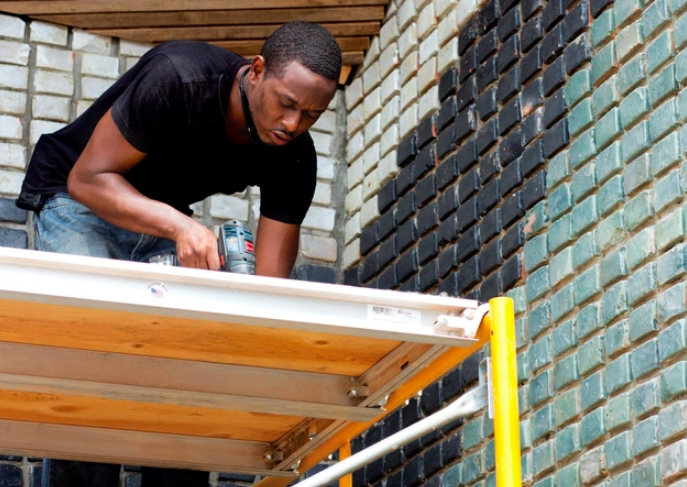
The structure’s new inhabitants include plant species that never could have survived a Michigan winter.
An artist named Andy Malone, purchased this abandoned house in Detroit for $500 and with the help of architect, Steven Mankouche and Ceramicist, Abigail Murray they have transformed this blighted property into a greenhouse plant nursery.
8) Plants grown in greenhouses are healthier.
How does a greenhouse work?
As you might expect from the name, the greenhouse effect works, well, like a greenhouse! A greenhouse stays warm inside even during the winter months. In the daytime, sunlight shines into the greenhouse and warms the air inside — as the glass walls are highly efficient in trapping the Sun’s heat.
A greenhouse grows any and all types of greenery that get most of their energy from the Sun.
Light is allowed to enter freely inside while the wind and rain are kept out. The result is a mild, warm microclimate that is perfect for all kinds of potted garden plants born from new seedlings. Plants grown in greenhouses are also protected from unpleasant weather conditions and pest infestations.
A Geodesic shape is naturally wind resistant. The round shape also handles snow effortlessly because it allows snow to slide off naturally, so there is rarely much snow pushing down on the green house. The geodesic structure is immensely strong, as it is made of concentric triangles, the most rigid shape.
7) Earth is one big greenhouse.
The greenhouse effect is a natural process that warms the Earth’s surface. When the Sun’s energy reaches the Earth’s atmosphere, some of it is reflected back to space and the remaining is absorbed and re-radiated by greenhouse gases.
The main greenhouse gases are: water vapor, carbon dioxide, Methane, Ozone, Nitrous oxide, Chlorofluorocarbons.
The greenhouse effect regulates the Earth’s temperature to a warm and cozy 58 degrees Fahrenheit (14 degrees Celsius) on average. Without it, life as we know it would not exist.
Why do we celebrate Earth Day only one day a year, when it takes 365 days, 5 hours, 59 minutes for the Earth to orbit the sun? Especially when we have no real alternatives.

Overall, greenhouse gases are a good thing. Without them our planet would be too cold to sustain life.
But there can be too much of a good thing. Scientists are worried that human activities are adding too much of these gases into the atmosphere, raising the earth’s temperature and causing irreversible harm to earth’s ecosystem.
6) A Greenhouse provides freshly made oxygen that helps sustain life.
Plants sustain themselves through a process called photosynthesis. Plants capture sunlight with chlorophyll, the green pigment found in their leaves. They use the light’s energy to split the water molecules they absorb through their root system. The hydrogen molecules combine with carbon dioxide to produce the carbohydrates they use for nutrients – the byproduct being the oxygen we breathe.
5) You can grow your own fresh herbs and vegetables all year round.
There is a real feeling of security in knowing that your veggies haven’t been sprayed with chemical pesticides or other contaminants and are of considerably better quality than most found at your local supermarket.
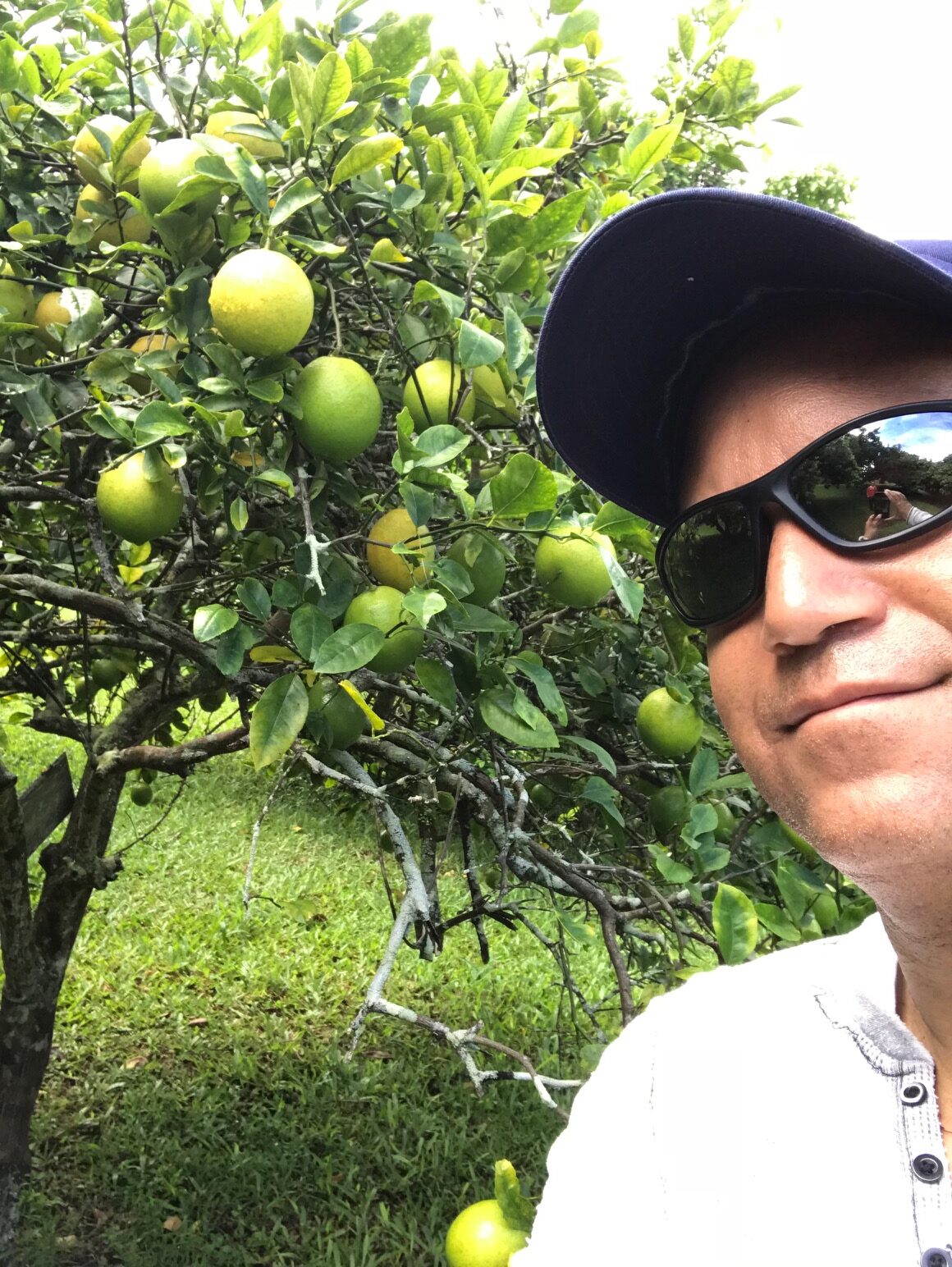
Experts strongly recommend that you stick to a single crop so you can concentrate your time, effort and resources on making sure it grows healthy and lush. Why? Because each new plant will require specialized needs in terms of water, attention, fertilization and shade. For a novice, experts say growing too many plants at once can quickly become overwhelming.
If you want to plant year-round, you will need to invest in a supplementary lighting system so that you can continue to cultivate healthy plants throughout the autumn and winter months.
When you’re starting out and have a small crop, a regular fluorescent strip hung 3 to 7 inches over your plants will be enough. Once you have a bigger area, upgrade your lighting system to LED grow lights. Grow lights are the popular choice as they conserve electricity but have enough Watts to light up larger areas.
4) You don’t have to get your hands dirty if you don’t want to.
What is hydroponics?
Hydroponics is the art of gardening without soil – from the Latin word meaning “working water”.
When a plant is grown in soil, its roots are perpetually searching for the necessary nutrition to support the plant. If a plant’s root system is exposed directly to water and nutrition, the plant does not have to exert the extra energy. There are several types hydroponic systems. The systems differ in the way the nutrient solution comes in contact with the roots, but they tend to work well in combination with a greenhouse.
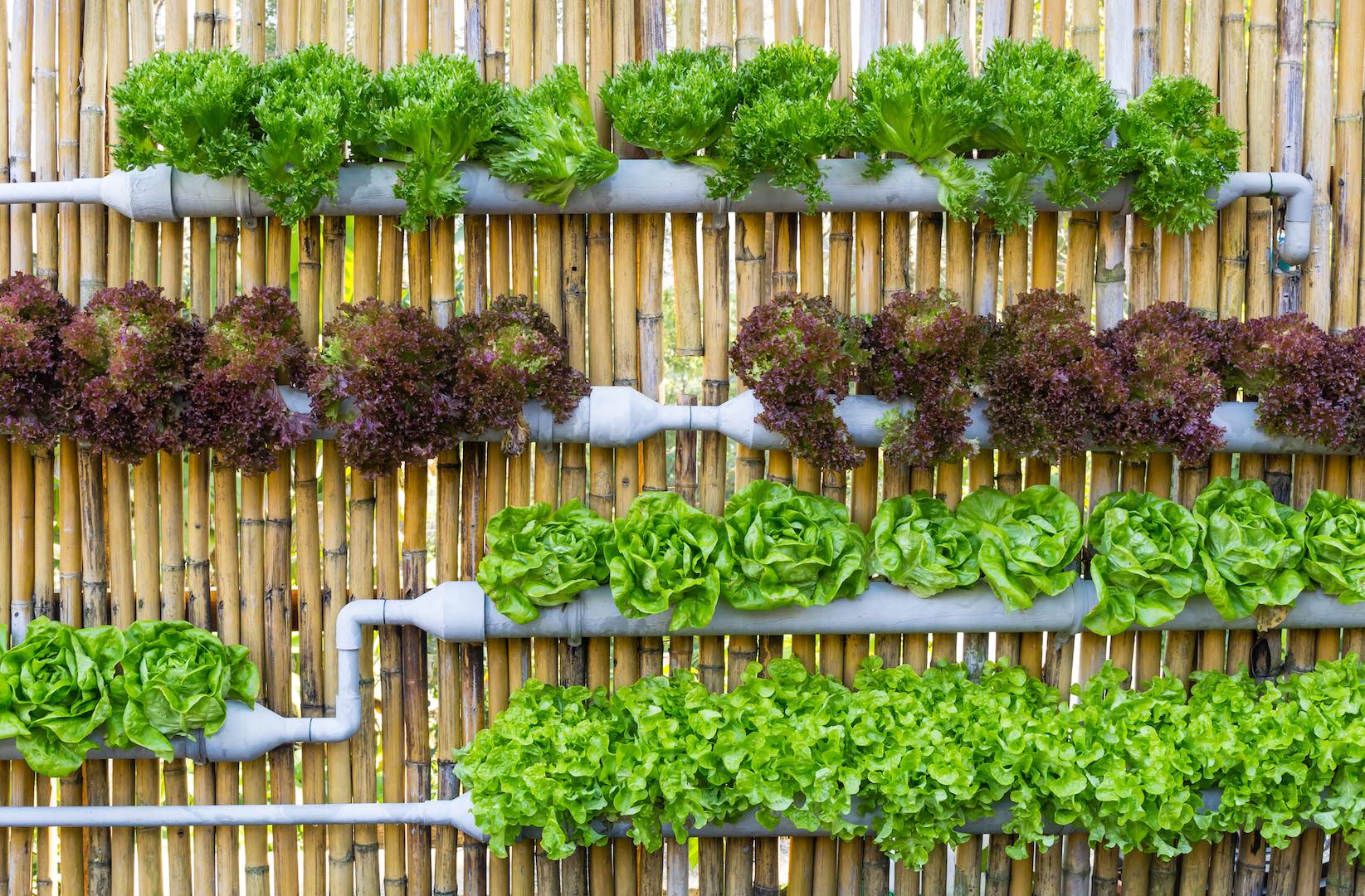
Greenhouses in the early- and mid-20th century moved from soil-based to hydroponic systems.
Plants do not need soil to photosynthesize. They need the soil to supply them with water and nutrients. When nutrients are dissolved in water they can be applied directly to the plant’s root system by flooding, misting, or immersion.
Hydroponic innovations have proven that direct exposure to nutrient-filled water can be a more effective and versatile method of growth than traditional irrigation.
Hydroponics continues to be a timeless and dynamic method of water conservation and crop production. The practice dates back to the mysterious Hanging Gardens of Babylon, one of the Seven Wonders of the Ancient World where the Euphrates River was diverted into channels that cascaded down the lavish garden walls.

A starving soldiers best friend.
It was during World War II that hydroponics really took off. Allied forces turned to hydroponics to ensure that troops stationed in remote places could produce their own fresh food. During these years, military hydroponic greenhouses were built all over the world and a new era of hydroponic-greenhouses that grew greenery on a large scale were launched.
Hydroponics put an end to the unpredictability of growing plants outdoors in the soil. Without the inert resistance of the soil, plants are free to grow vigorously and rapidly, allowing the seedlings to mature much faster.
3) Reduces your carbon footprint
Growing your own food cuts down on containers, packaging and shipping that makes up a major portion of solid waste – a total of 77.9 million tons of it 2015, according to the Environmental Protection Agency. The majority of the recent spike in delivery truck emissions are the result of “the last mile” deliveries made to individual homes. The problem has only gotten worse as online shopping has skyrocket through global the pandemic.
Taking a timeout from meat to go partially vegetarian makes a real difference.
Meat products also have much larger carbon footprints than grains and vegetables. Meaning a single cow produces about 500 pounds of meat but consumes a disproportional amount energy. This includes the grain the cow eats, which requires water, as well as the fertilizer and fossil fuel-powered equipment needed to grow and harvest the feed.
Old habits truly do die hard — as most automobiles are still powered by dead dinosaurs.
Fossil fuels are called “fossils” because the fossilized remains of plants and animals that lived millions of years ago found deep under ground remain our main source of energy.
Less cow farts.

A single cow also expels between 30 and 50 gallons of methane daily— one of the nastier greenhouse gases. Multiply that by approximately 1.5 billion cows on the planet, and you get a clear picture of just how damaging the meat industry is to the environment. In contrast, going meatless one day a week for a year saves the equivalent of 348 driving- mile emissions, according to The Monday Campaigns, the nonprofit organization behind the Meatless Monday initiative,
2) Renewable resources like solar energy, geothermal heating and cooling, do not contribute to global warming.
Utilizing the top layer of the earth’s crust as a source of heat, ground source heat pumps are among the most energy-efficient technologies for providing HVAC and other water heating systems.
Ground source heat pumps take advantage of the earth’s moderate temperature below ground. The temperature at 6 meters, or 20 ft. beneath the surface are roughly equivalent to the earth’s average mild temperature range.
Setup costs are higher than for conventional systems, but the difference is usually returned in energy savings in 3 to 10 years. Geothermal heat pump systems are reasonably warranted by manufacturers and their working life is estimated at 25 years for inside components and 50 or more years for the ground loop.

Like a refrigerator or air conditioner, these systems use a heat pump to force the transfer of heat from the ground. Against the natural direction of flow, heat pumps transfer heat from a cool space to a warm space, or they can enhance the natural flow of heat from a warm area to a cool one. The core of the heat pump is a loop of refrigerant pumped through a vapor-compression refrigeration cycle that moves the heat.
The engineering and scientific communities prefer the terms “geoexchange” or “ground source heat pumps” to avoid confusion with traditional geothermal power, which uses a high temperature heat source to generate electricity
A handful of Geothermal energy systems tap into volcanic heat to create electricity.
“Geothermal” derives from the Greek and means “Earth heat” – which geologists and many laymen understand as hot rocks, volcanic activity or heat derived from deep within the earth. Geothermal energy mainly comes from volcanic heat stored beneath the earth’s surface, where underground reservoirs of water heated by volcanic activity generate heated steam that is converted into electricity.
On Hawaii Island, Puna Geothermal Venture operates an advanced binary-cycle power plant. The heat from hot water in a heat exchanger generates vapor from a working fluid with a low-boiling point. This vapor drives a turbine to produce electricity.
In May of 2018, the Puna Geothermal plant was forced to shut down after lava flows from Hawaii’s Kilauea volcano crept within a few hundred yards of the plant.

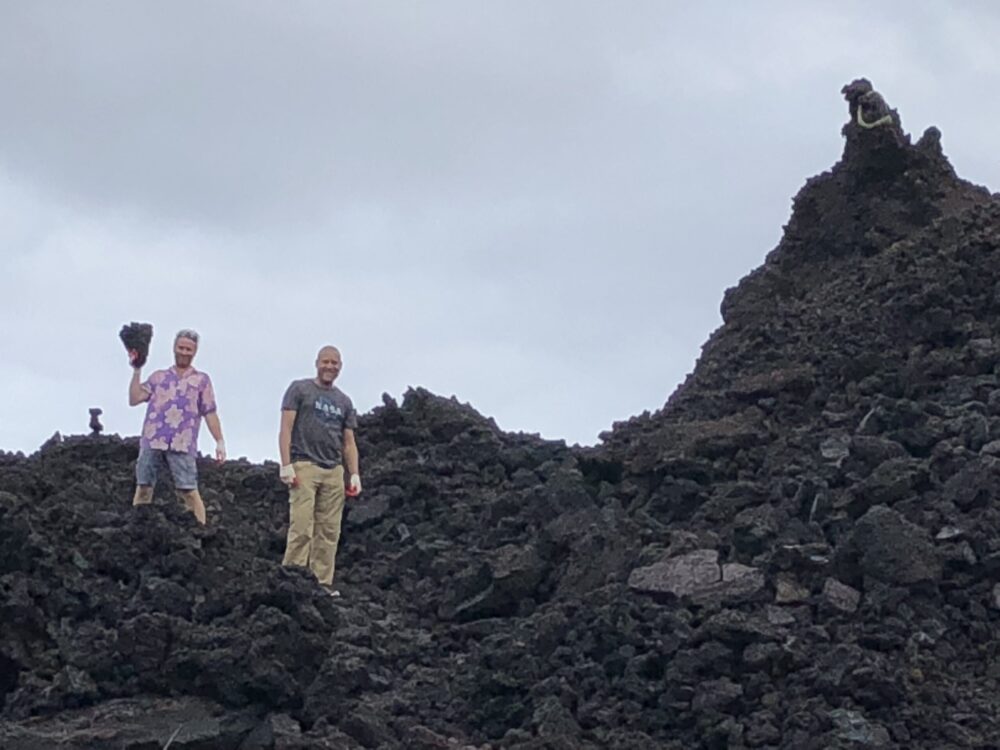
Greenhouses don’t have to be purely recreational hobby spaces exiled to the backyard. They can also be made into fully functional homes.
People who live off the grid in greenhouses, like my friend living near Hilo on the Big Island of Hawaii are ahead of the curve. Mark and his family grow their own food, generate their electricity from solar power and capture rainwater in large above-ground tanks to supply their household water needs.
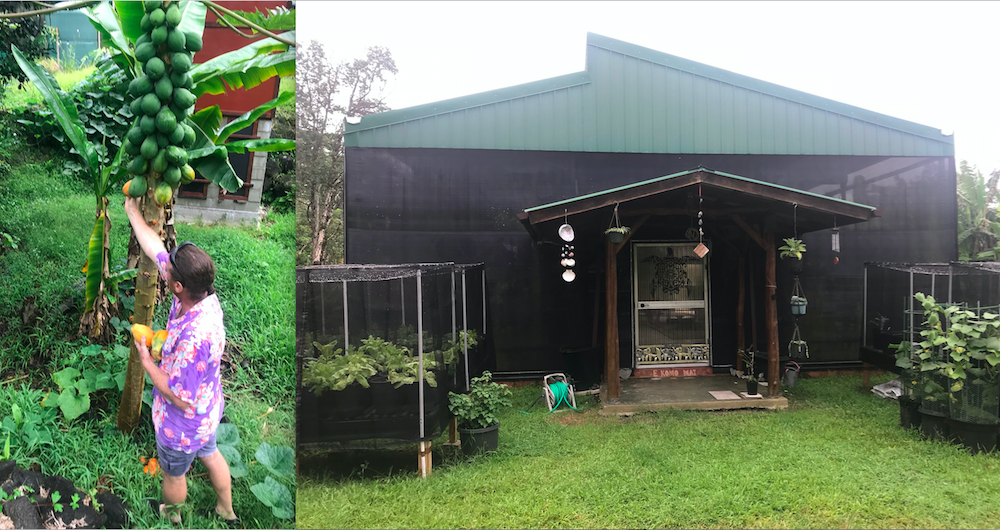
The global pandemic has many convinced that Living in a bubble may not be such a bad thing.
Though not technically a greenhouse, these domes can help you unwind and safely social distance with your friends, family and social network.
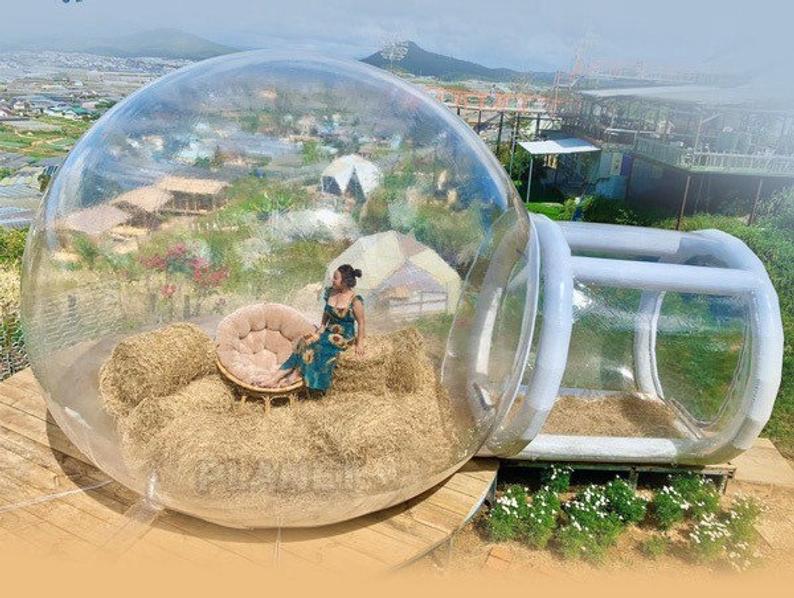

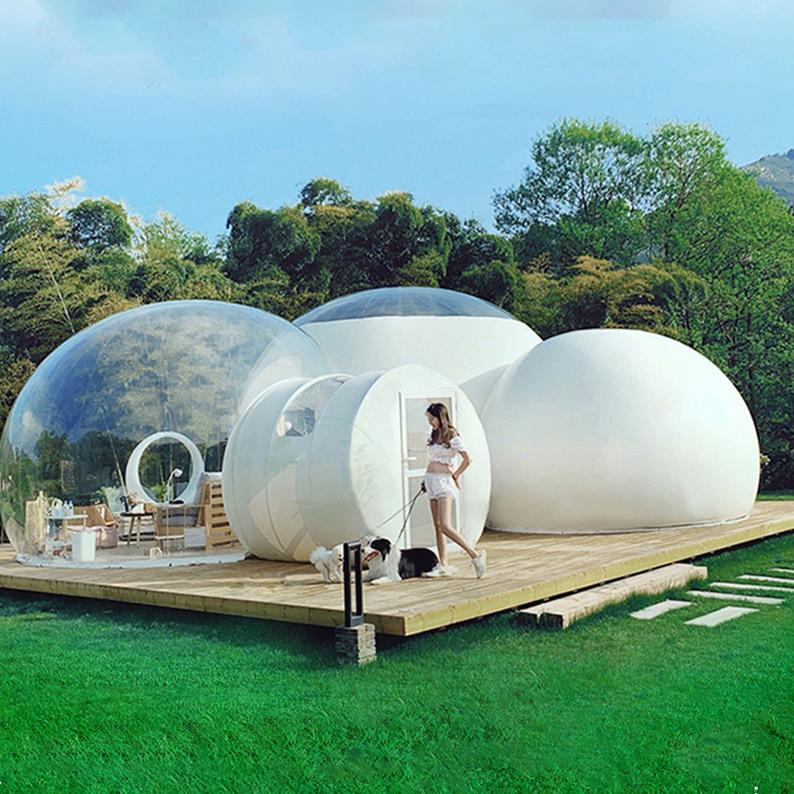
Homeowners across the world are realizing that one of the simplest ways to save money on heating, lighting and food is to move in with the plants.
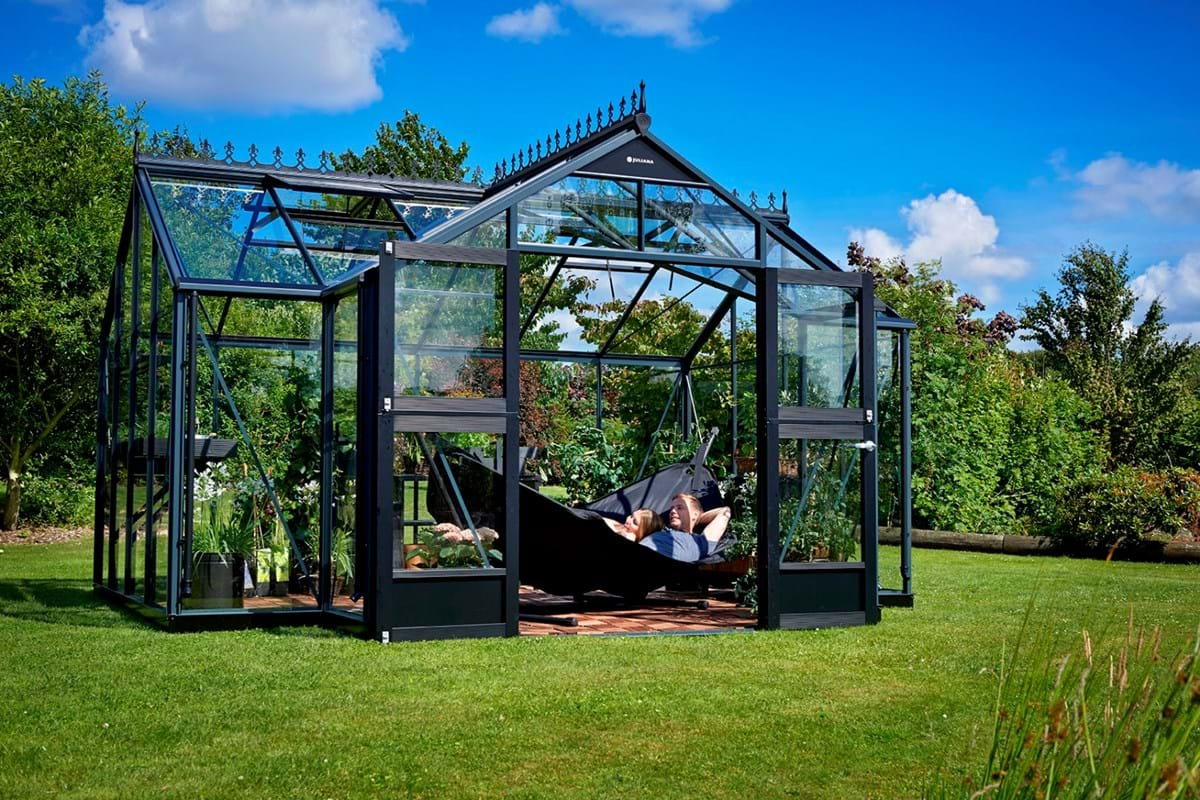
2) Living inside a greenhouse home provides insulation for an existing structure and creates new living spaces – with room to grow your greenery indoors away from outdoor pests.
You may need a building permit to construct or place a greenhouse on your property, but it really depends on where you live. For most rural areas, it is like adding a shed, which is an auxiliary building that does need a permit. However, the closer you get to a big city, the tougher the codes. Local building authorities have the final say on whether you need a permit, so check with your local planning department before diving in.
It’s now okay to throw stones if you live in a glasshouse
All of the glass in a greenhouse home should be made of tempered glass, making it okay to throw stones! Safety glass crinkles when it is broken, but does not shatter, ideal for avoiding nasty cuts. Please be careful when shopping and make sure the glass you purchase for your greenhouse is tempered.
Practical considerations included, greenhouses can be turned into eco-friendly and amazingly beautiful spaces to call home.

“Camouflage House 3,” designed by Tokyo-based architect Hiroshi Iguchi, is an example of a glass greenhouse home that blends in perfectly with its surroundings. It is located in Nagano, Japan, a mountainous and lush area with lots to offer. But the forested area outside the property didn’t fully satisfy Iguchi, so he decided to add some extra space for growing trees inside.
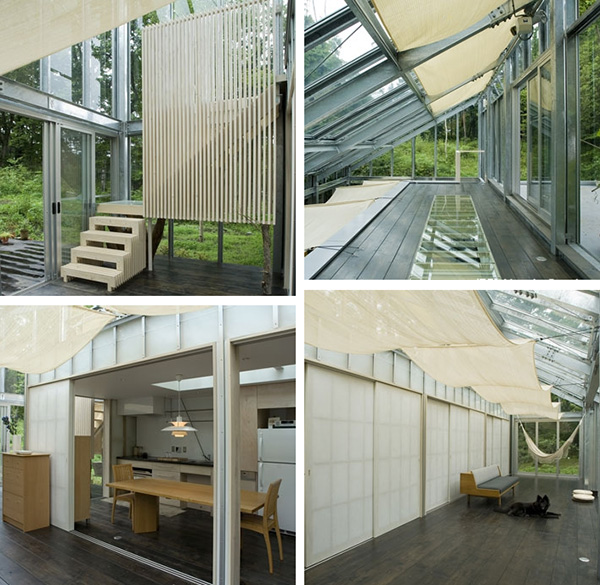
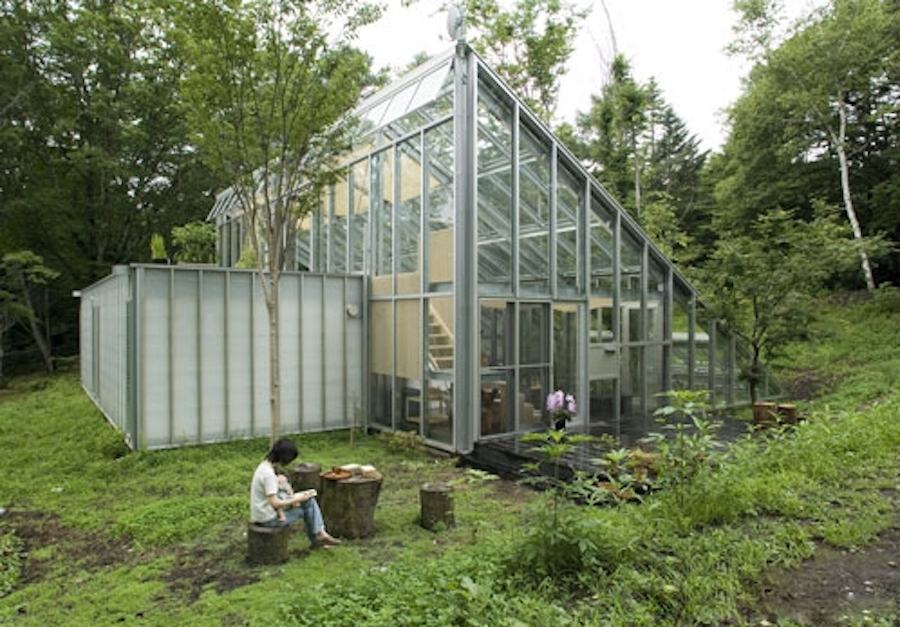
Nature House, Sweden
In 1976, architect Bengt Warne decided that he wanted to have a greenhouse home in Vänersborg, Sweden. But rather than converting an existing structure and moving inside, he built a normal house, and then constructed a greenhouse around it.
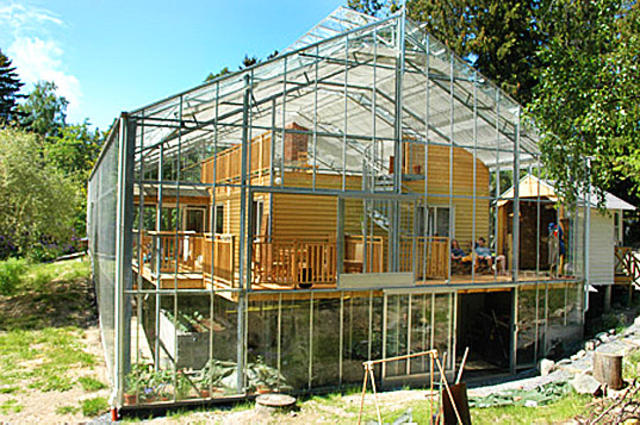
The glass shell surrounding Nature House — or “Naturhus” — covers about 984 square feet of space. In addition to providing a sunny and warm environment for plants, it also insulates the small inner 492-square-foot dwelling from the cold, which cuts the property’s estimated electric bill in half. Both structures are heated by an eco-friendly wood-burning oven and a hot water masonry heater.
Belgium Greenhouse home
Not along ago, Antwerp-based Verdickt & Verdickt Architecten built a minimalist barn-style home with a greenhouse-like use of glass.
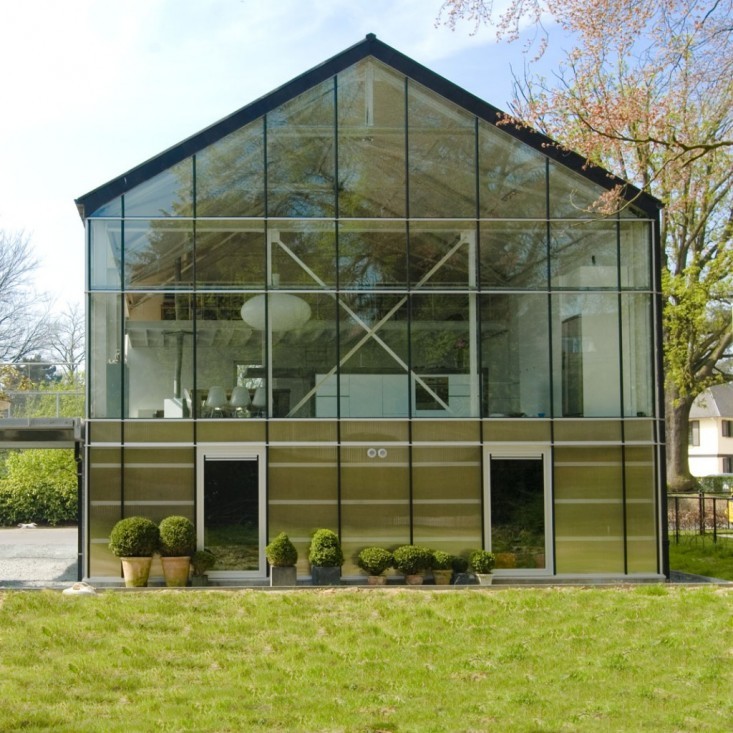
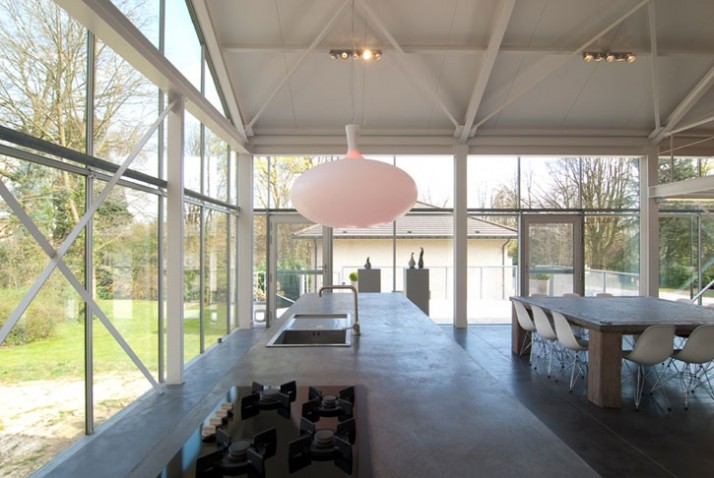
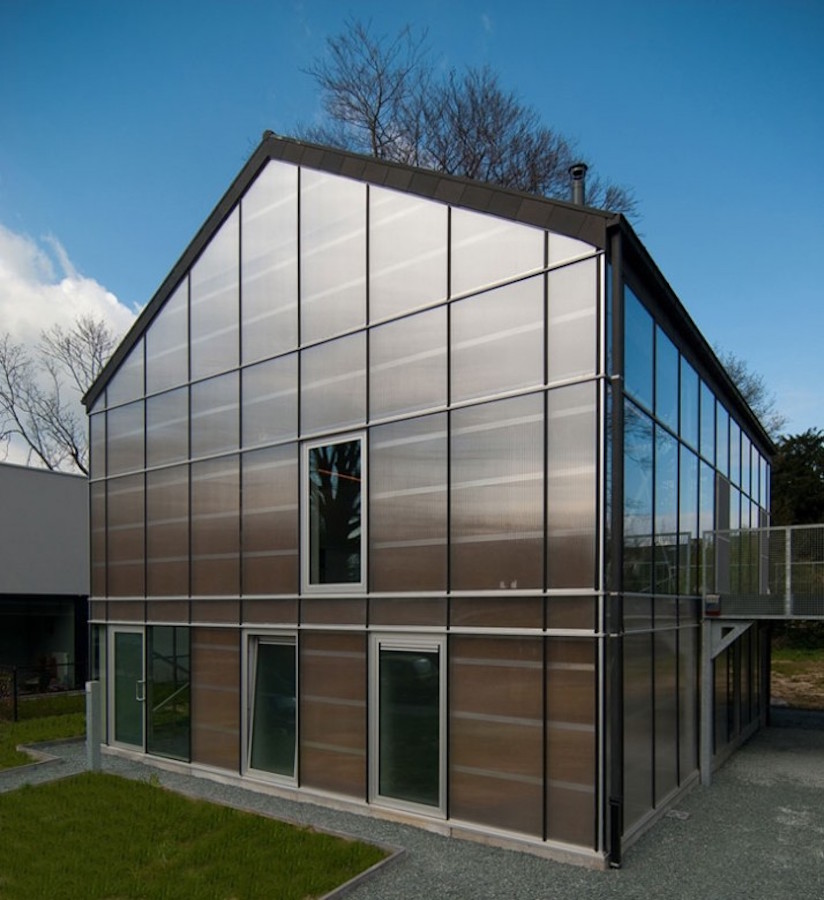
Geoship Home Builders

This California-based Geoship has plans to revolutionize housing affordability with a new kind of housing that is affordable, resilient, modular and green with a newly invented material that Is harder than concrete. The inspiration is from Buckminster Fuller, the architect and futurist who popularized the geodesic dome in the 1960s and 70s. Fuller felt he was missing the right building material. But that was then and this is now. Geoship’s Bioceramic material domes are zero-carbon and engineered to last for 500 years.
Geoship estimates housing costs, including delivery, to be between $45,000 to $230,000 for everything in a house. With construction and on-site assembly, the price translates to around $130 to $160 per square foot, including all electrical, appliances, cabinets, HVAC, and more, according to Geoship.
1) Engineers and scientists have designed biospheres to mimic how living and nonliving things interact in their natural ecosystems.
The Eden Project repurposed a160-year old exhausted china clay quarry at Bodelva, near St. Austell in Cornwall into an awe-inspiring Rainforest Biome.
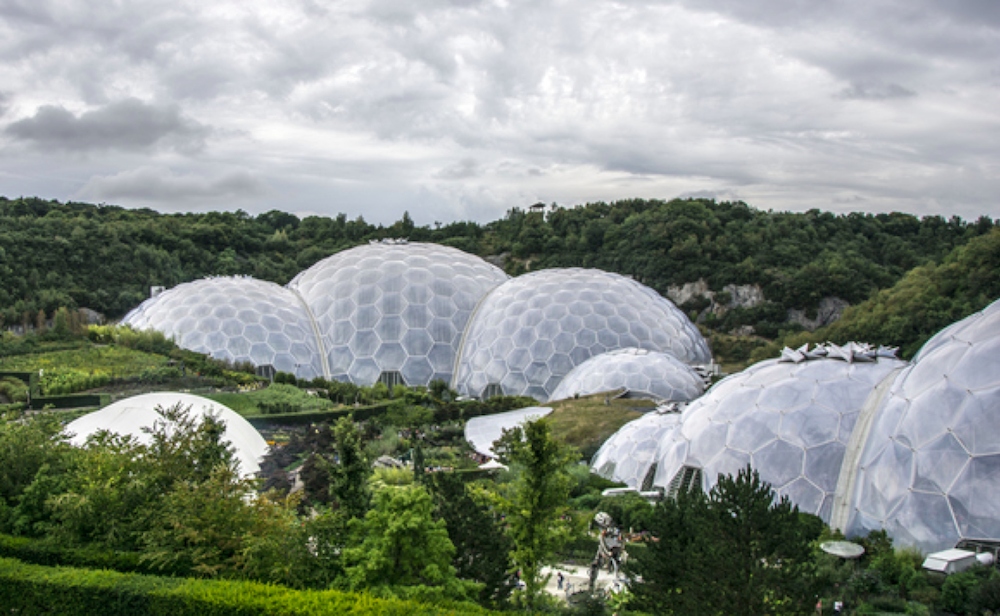
Visitors experience four of the world’s rainforest environments: Tropical Islands, Southeast Asia, West Africa and Tropical South America.
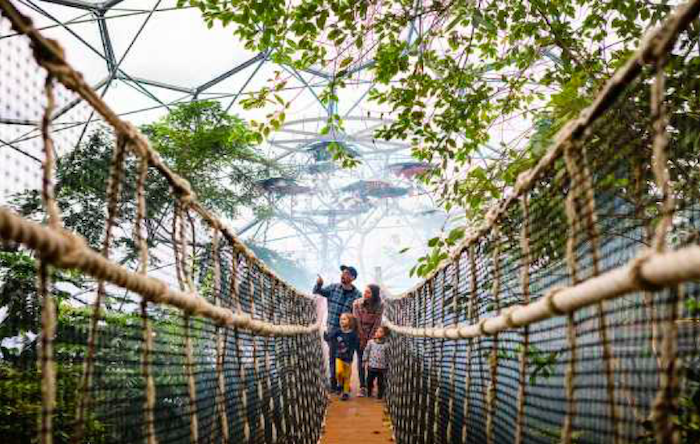
Biosphere 2

Why did they call the experiment in the Arizona Desert Biosphere 2?
In the fall of 1991, an airtight, three-acre mini-world called Biosphere 2, a $150-million futuristic facility emerged near Oracle, Arizona., a two-year study of how a mini-biosphere could work—complete with wilderness areas, a farm and a group of humans dropped inside with minimal contact with the outside world.
One of the goals of biosphere 2 project was to help NASA and other space agencies learn more about life-support systems for long-term space missions.
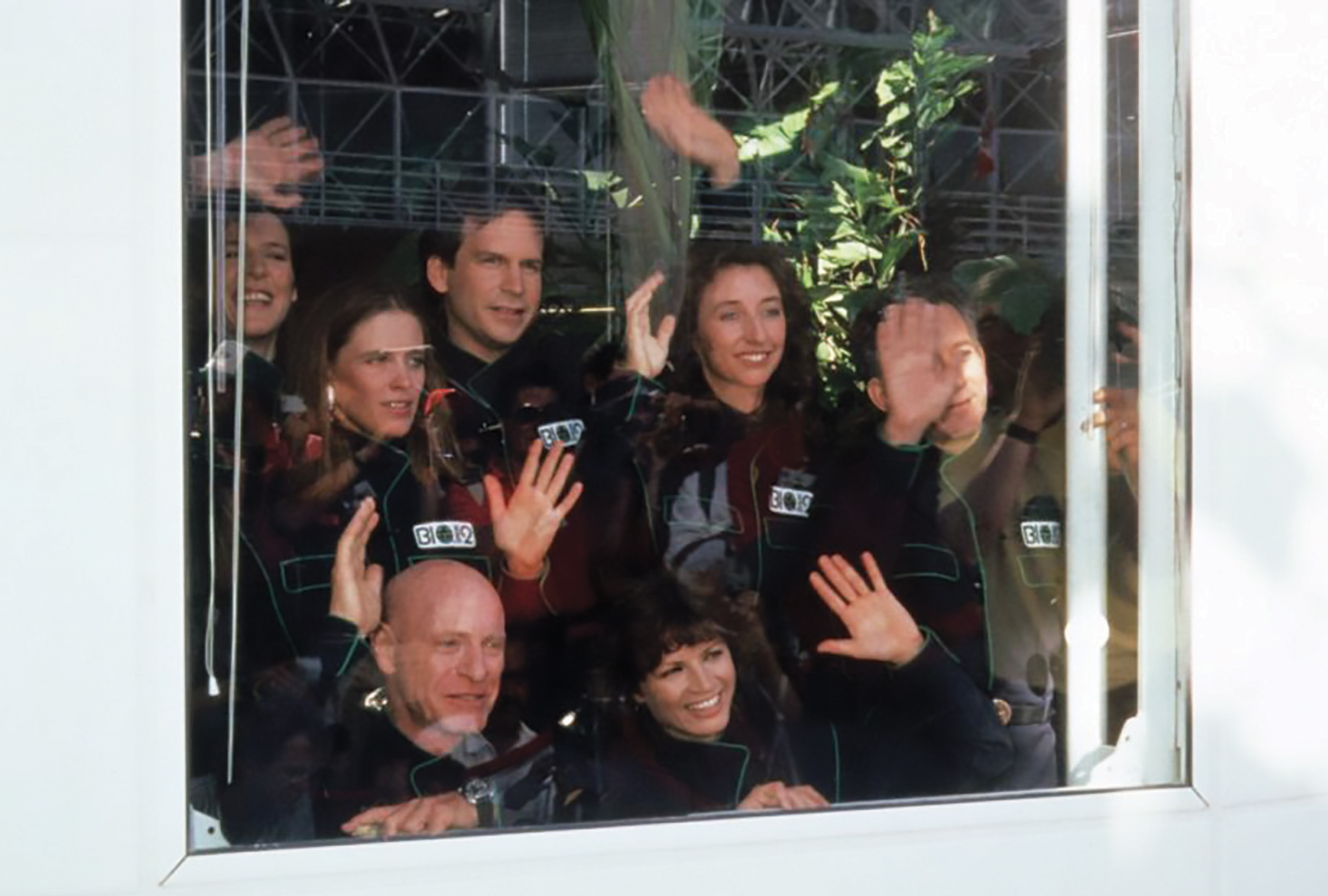
There was no operating manual. A total of 5 participants, including a botanist and a doctor were sealed inside for two years.
A total of 3,000 species of plants and animals coexisted in Biosphere 2. They couldn’t use chemical pesticides, so instead used biological controls like ladybugs to eat pests and four species of beneficial cockroaches to recycle organic matter. Unfortunately, the great evolutionary survivor—the household cockroach—snuck in and exploded in crop-threatening numbers, as did another stowaway species of ants.
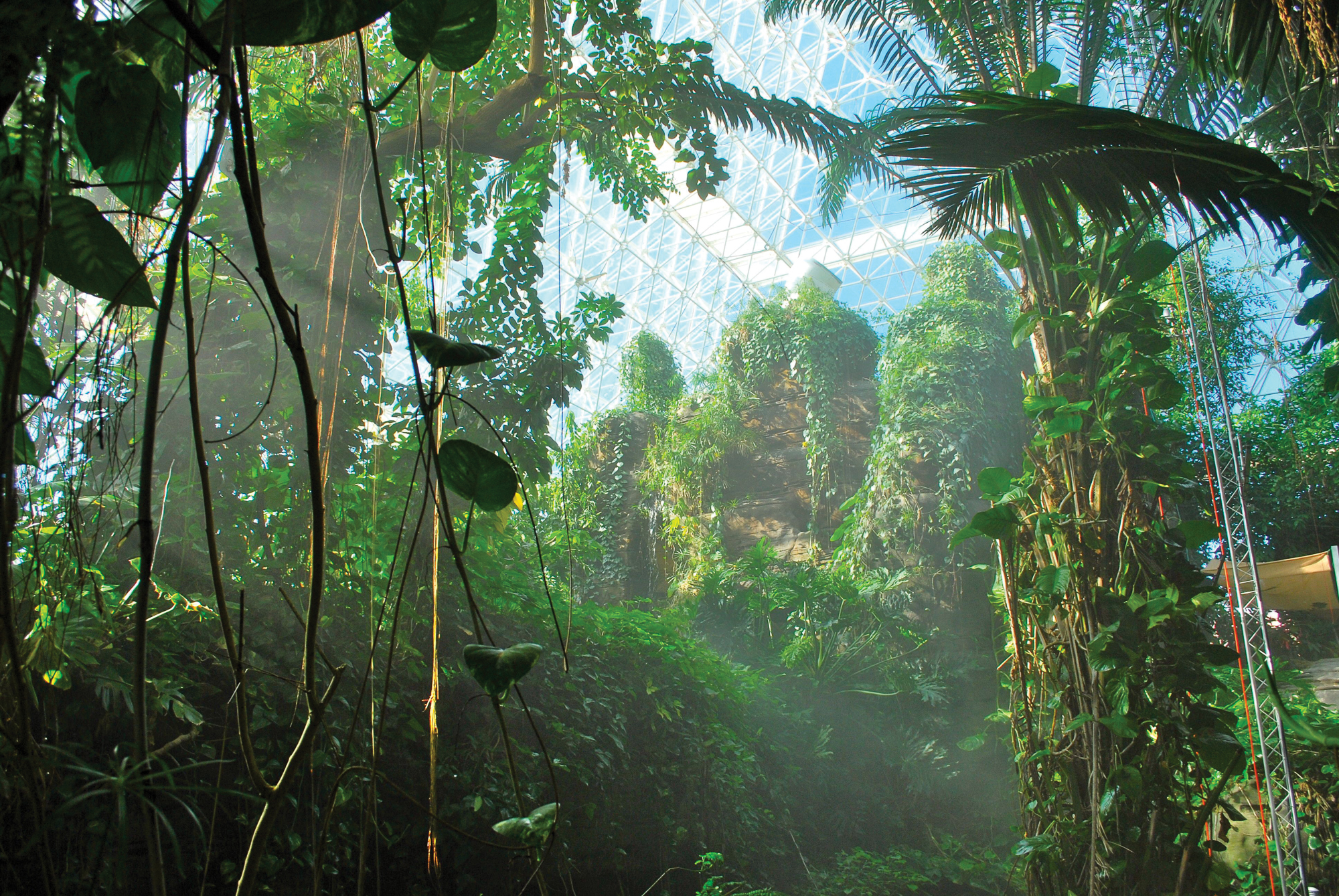
Enduring a few hiccups, including a life-threatening oxygen deprivation situation, the group emerged in remarkably good health, with the body-fat content of pro athletes, lower blood pressures and cholesterol levels then when they first entered.
In case your wondering, the experiment was called Biosphere 2 because the first mega greenhouse called Biosphere 1 was already taken – Planet Earth. We hope the next generation of mini-biosphere will be found uptown in a backyard somewhere in Harlem. Dare to dream.
Terry Nelson is Executive Director of the Global Artists Coalition based in New York City and a freelance writer with a degree in Journalism from the University of North Carolina at Chapel Hill.

Further reading and resources:
https://www.gardensillustrated.com/garden-equipment/tools/9-of-the-best-mini-greenhouses/
https://sites.google.com/site/fishluvr/greenhousegases
http://www.rocagallery.com/growing-up-hydroponics-cultivates-food-without-soil
https://www.theatlantic.com/magazine/archive/2016/11/the-greenhouse-effect/501143/
https://dartmouthalumnimagazine.com/articles/biosphere-2-what-really-happened
https://medium.com/@MarkCrumpacker/a-look-back-at-the-amazing-history-of-greenhouses-adf301162a7b
https://www.theatlantic.com/magazine/archive/2016/11/the-greenhouse-effect/501143/
https://www.forbes.com/sites/johnkoetsier/2020/04/29/these-carbon-neutral-bioceramic-geodesic-dome-homes-last-500-years-and-dont-burn-or-rust/?sh=406995716cc5





